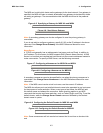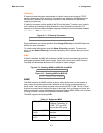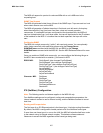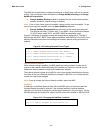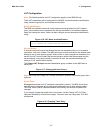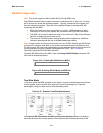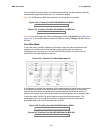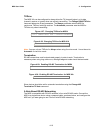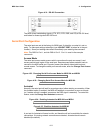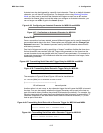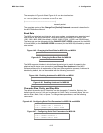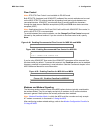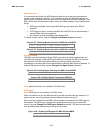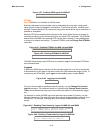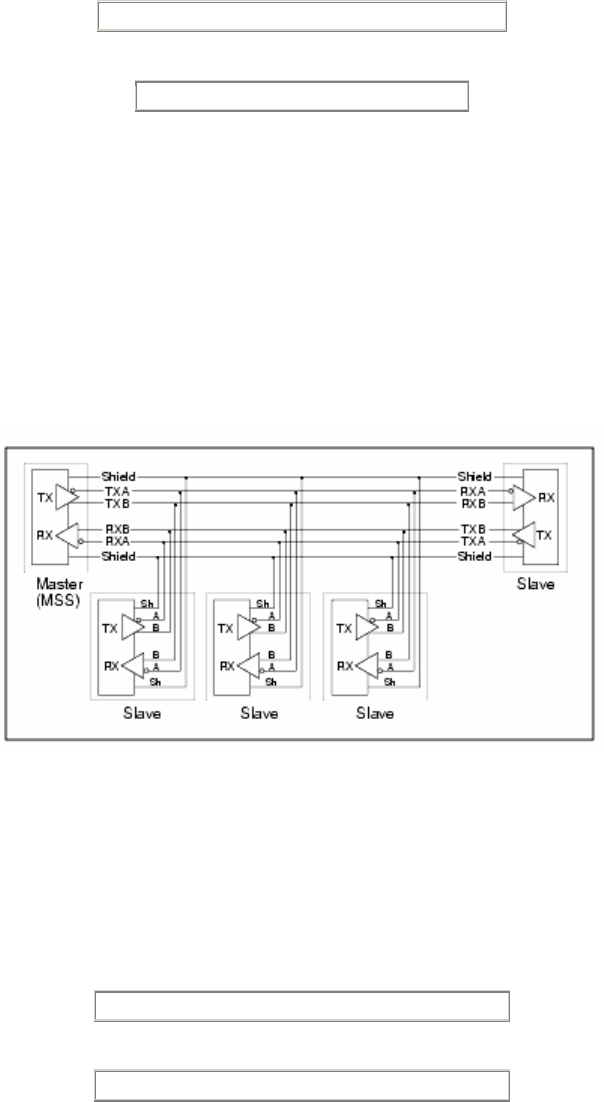
MSS User Guide 4: Configuration
4-9
line is available to receive again. At most baud rate settings, the timing delay is typically
one character length with a maximum of 1.5 character lengths.
Note: For 600 baud and 4800 baud operation, the timing delay is doubled.
Figure 4-22: Enabling Two-Wire RS-485 Mode for MSS4
Local> CHANGE RS485 PORT 2 MODE 2WIRE
Figure 4-23: Enabling Two-Wire RS-485 Mode for MSS-VIA
Local> CHANGE RS485 MODE 2WIRE
Note: For two-wire mode, the TXDrive setting must be set to Automatic (see TXDrive on
page 4-10). If you enable two-wire mode and TXDrive is set for Always, the MSS returns
an error.
Four-Wire Mode
In four-wire mode, the MSS operates in full duplex: one pair of wires functions as the
transmit pair, another pair of wires functions as the receive pair, and there is a
shield/ground wire for each pair. In a four-wire RS-485 network, one device acts as
master while the other devices are slaves.
Figure 4-24. Example Four-Wire Mode Network
It is important to connect the transmitter of the master device to the wire that is connected
to the receive terminals on the slave devices, and connect the receiver of the master
device to the wire that is connected to the transmit terminals on the slave devices. In
essence, the master device will be connected to the slave devices with a swapped cable.
In four-wire mode, the MSS is able to send and receive data simultaneously. The
advantages of four-wire mode are double the throughput of two-wire mode and a
guaranteed open path to each slave device's receiver.
Figure 4-25: Enabling Four-Wire RS-485 Mode for MSS4
Local> CHANGE RS485 PORT 2 MODE 4WIRE
Figure 4-26: Enabling Four-Wire RS-485 Mode for MSS-VIA
Local> CHANGE RS485 MODE 4WIRE





